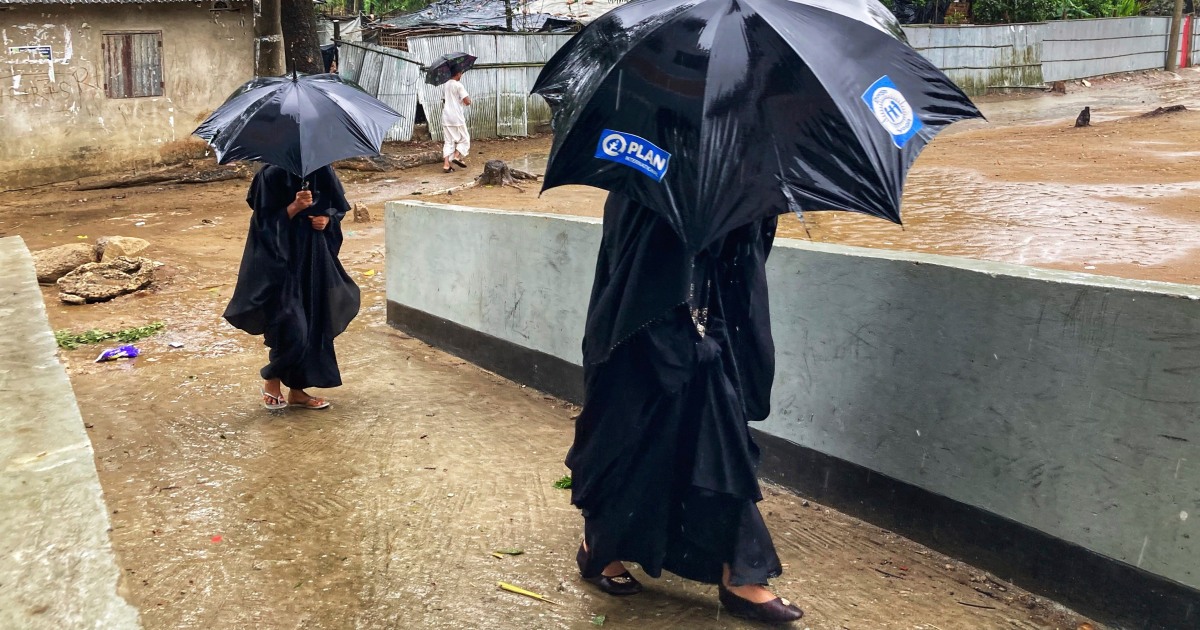Bangladesh and Myanmar braced on Sunday as a strong cyclone began to batter coastal areas and authorities urged thousands of people in both countries to seek shelter.
The outermost band of Cyclone Mocha came ashore in Myanmar’s Rakhine State on Sunday morning, and the center of the storm was expected to make landfall near Sittwe Township, which was under the highest weather alert, by late afternoon. high, the Myanmar Meteorological Department said on Sunday.
More than 4,000 of Sittwe’s 300,000 residents have been evacuated to other cities since Friday and more than 20,000 people are sheltering in sturdy buildings such as monasteries, pagodas and schools located on the city’s highlands, said Tin Nyein Oo, who is helping people in shelters in Sittwe.
Many local residents live in areas nearly 10 feet above sea level, places residents believe storm surge cannot reach, he added.
Strong winds of 25 to 40 miles per hour were blowing in the city, Tin Nyein Oo said Sunday morning.
“The storm hasn’t moved in yet, so we don’t have much difficulty. However, there are too many people in the shelters and not enough toilets,” she added.
Lin Lin, president of a local charity, earlier said there was not enough food in Sittwe shelters after more people than expected arrived.
In Bangladesh, the weather in most areas remained sunny and humid on Sunday morning.
UN agencies and aid workers in Bangladesh have placed tons of dried food and dozens of ambulances with mobile medical teams in sprawling refugee camps with more than 1 million Rohingya who have fled persecution in Myanmar.
Bangladesh issued the heightened danger signal for Cox’s Bazar, site of the camps. The Bangladesh Meteorological Department warned that the cyclone could cause serious damage to lives and property in eight coastal districts.
No heavy rain had been reported in Cox’s Bazar as of Sunday morning.
Bangladesh, with more than 160 million inhabitants, has prepared more than 1,500 cyclone shelters. The navy said it is keeping 21 ships, maritime patrol planes and helicopters ready for rescue and relief operations.
Bangladeshi authorities said heavy rains from the cyclone could trigger landslides in Chattogram and Cox’s Bazar and three other hilly districts: Rangamati, Bandarban and Khagrachhari.
In May 2008, Cyclone Nargis struck Myanmar with a storm surge that devastated populated areas around the Irrawaddy River delta. At least 138,000 people were killed and tens of thousands of houses and other buildings were leveled.
Roxy Mathew Koll, a climatologist at the Indian Institute of Tropical Meteorology in the city of Pune, said cyclones in the Bay of Bengal are becoming more intense faster, partly due to climate change.
Climate scientists say cyclones can now retain their energy for many days. Cyclone Amphan in eastern India in 2020 continued to travel overland as a strong cyclone and caused extensive devastation.
“As long as the oceans are warm and the winds are favourable, cyclones will maintain their intensity for a longer period,” Koll said.
Cyclones are among the most devastating natural disasters in the world, especially if they affect densely populated coastal regions in South Asia.

